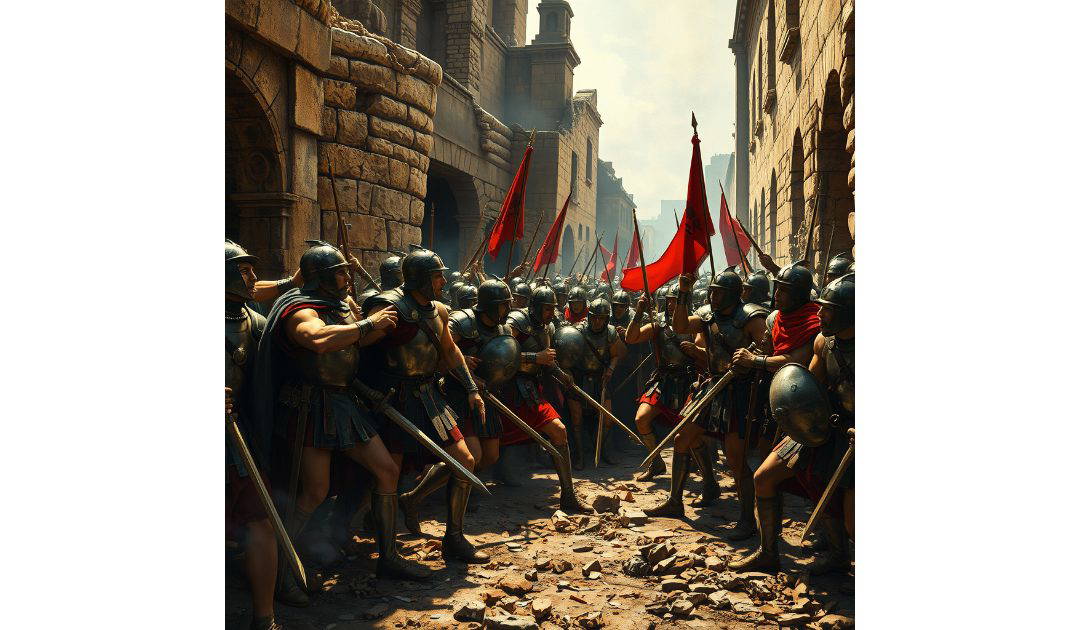On the 6th of May, 1527, the third (and hopefully last) Sack of Rome started. The 1527 plundering of Rome was orchestrated by forces supposedly loyal to the Holy Roman Emperor, Charles V, during the War of the League of Cognac. The Imperial army, consisting largely of unpaid German Landsknechts, Italian mercenaries, and Spanish soldiers, launched a brutal attack on Rome after the failure of negotiations with Pope Clement VII. The army, fueled by unpaid wages and religious fervour, breached the city’s defences with ease after an eight-day siege. The sack was catastrophic; the soldiers unleashed unrestrained violence upon the city, pillaging treasures, desecrating churches, and committing countless atrocities against the populace. The cultural and economic fabric of Rome was significantly damaged, with many artworks stolen or destroyed. The sack of 1527 left Rome in a state of ruin and significantly weakened the papacy’s authority while altering the political landscape of Italy. It marked the end of the Roman Renaissance, leading to a shift in artistic and intellectual centres away from Rome.
The earliest sack of Rome occurred in 390 BCE, at the hands of the Gauls under the leadership of Brennus. The story begins with the Battle of the Allia, where the Roman forces suffered a humiliating defeat against a fiercely determined Gallic army. This crushing loss left the city vulnerable and defenceless. The Gauls, seizing the opportunity, marched into Rome, where a terrified and largely evacuated populace watched helplessly as their city was ransacked. The Senate and many citizens had taken refuge in the citadel on the Capitoline Hill, which the Gauls attempted but failed to breach, largely due to the legendary warning from the sacred geese of Juno. The occupation by the Gauls was a period of intense fear and despair for the Romans. The city was forced to pay a hefty ransom in gold to spur the invaders’ withdrawal, an act that, although effective, left a stain on the Roman pride. This invasion prompted significant military and structural reforms within Rome, including the reorganisation of the army and the construction of the Servian Wall.
The second sack took place at a time when the Western Roman Empire was in decline, facing numerous external threats and internal instability. In 410 CE, the Visigoths, led by King Alaric, descended upon Rome. This event marked the first time in almost 800 years that Rome had fallen to a foreign enemy. Alaric’s siege was driven by a mix of opportunistic plundering and strategic necessity. The Visigoths, having been former allies who felt betrayed by the Roman authorities, sought compensation for unmet promises. After laying siege to the city, Rome’s gates were ultimately opened due to treachery and desperation within, allowing the Visigoths to enter. For three days, the Visigoths roamed the streets of Rome, looting and pillaging. Despite the chaos, Alaric’s forces demonstrated relative restraint compared to other conquerors. Many of the city’s religious buildings were spared, and some historians argue that the actual destruction was less severe than initially feared. Nevertheless, the psychological impact was profound. For the Roman world, this sack was a symbol of the empire’s vulnerability and foreshadowed the eventual fall of the Western Roman Empire. It served as a wake-up call, highlighting the empire’s need for reform and adaptation in the face of increasing barbarian pressures.

